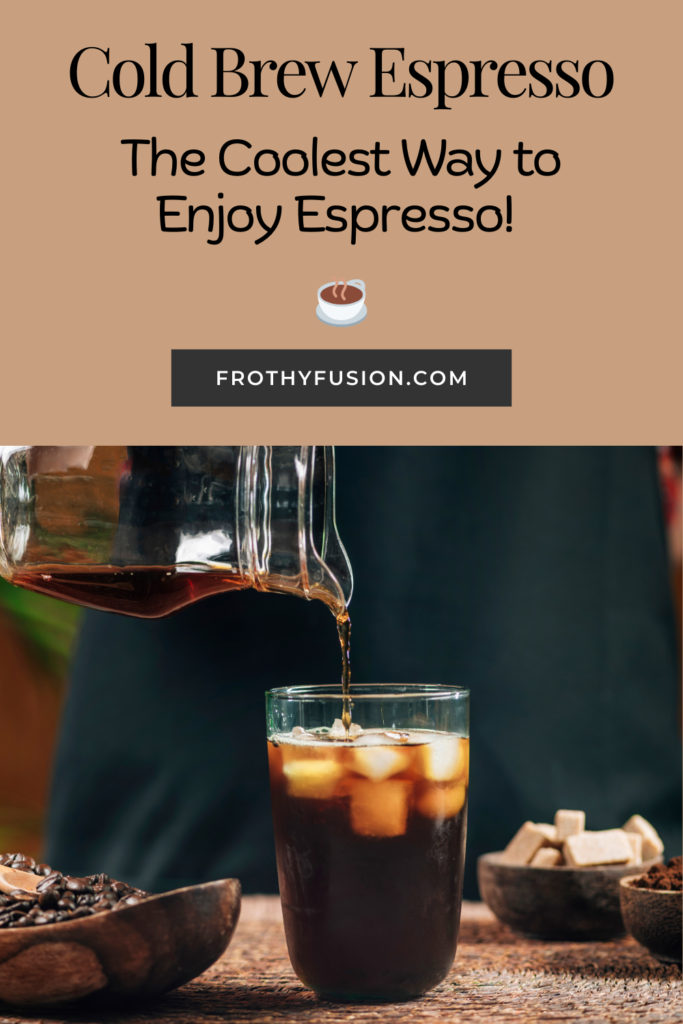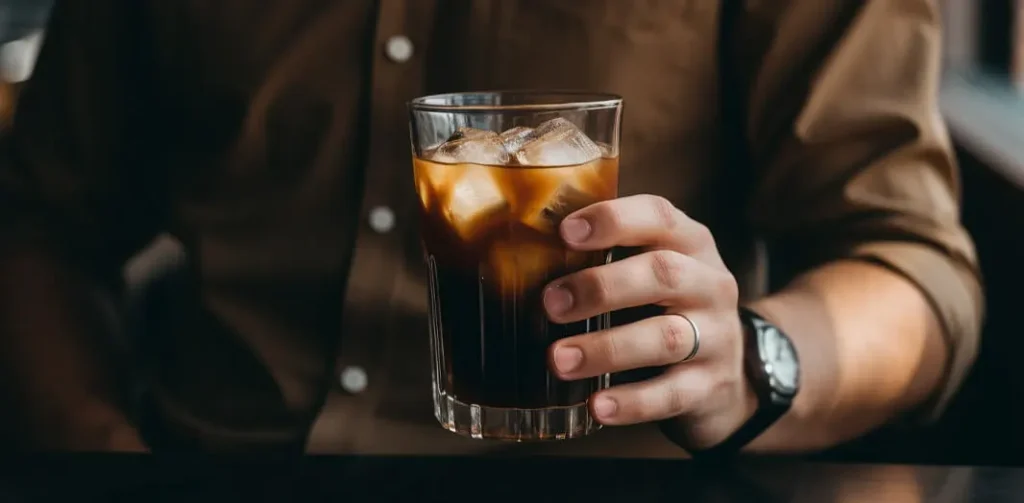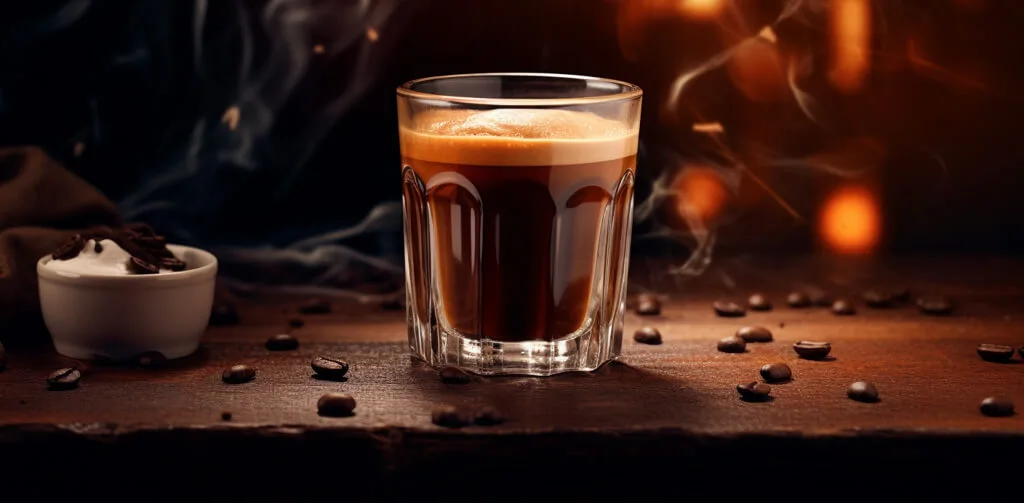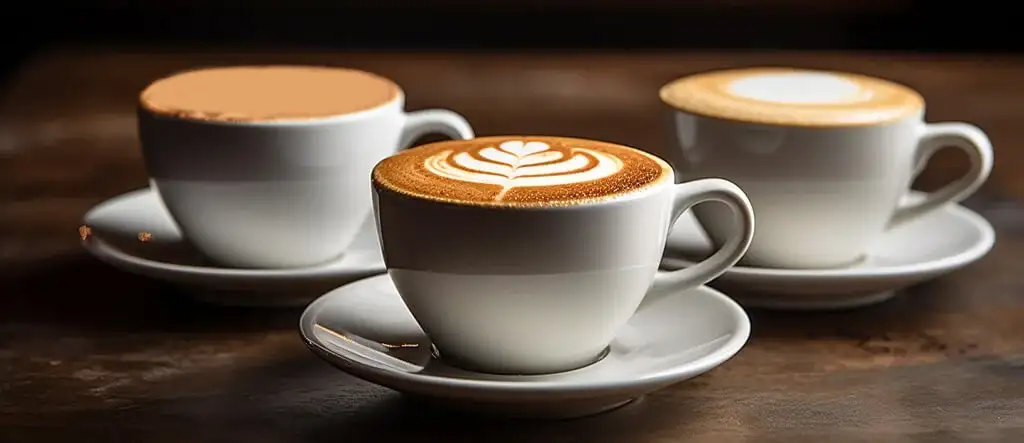Imagine sipping on a bold, smooth, and invigorating espresso without the heat. That’s the essence of cold brew espresso – a brewing method that extracts the rich flavors of coffee beans while offering a refreshingly chilled experience.
This magical process transforms the robust intensity of espresso into a smoother, less acidic delight, perfect for coffee lovers seeking something new. Whether you’re a seasoned espresso enthusiast or a curious coffee explorer, let’s dive into the magic of cold brew espresso and discover what makes it so irresistible.
- Difference between Cold Brew and Traditional Espresso
- Brewing methods and equipment
- Organoleptic properties and taste differences
- Chilled vs. hot extraction
- How to Make Cold Brew Espresso
- Dilution and serving suggestions
- Factors Affecting the Taste of Cold Brew Espresso
- Is Cold Brew Espresso the Same as Regular Espresso?
- Storing and Enjoying Cold Brew Espresso
- Creative ways to enjoy cold brew espresso
- Here are five creative ways to enjoy cold brew espresso:
- Cold brew espresso-based recipes
- That’s A Wrap
- Frequently Asked Questions
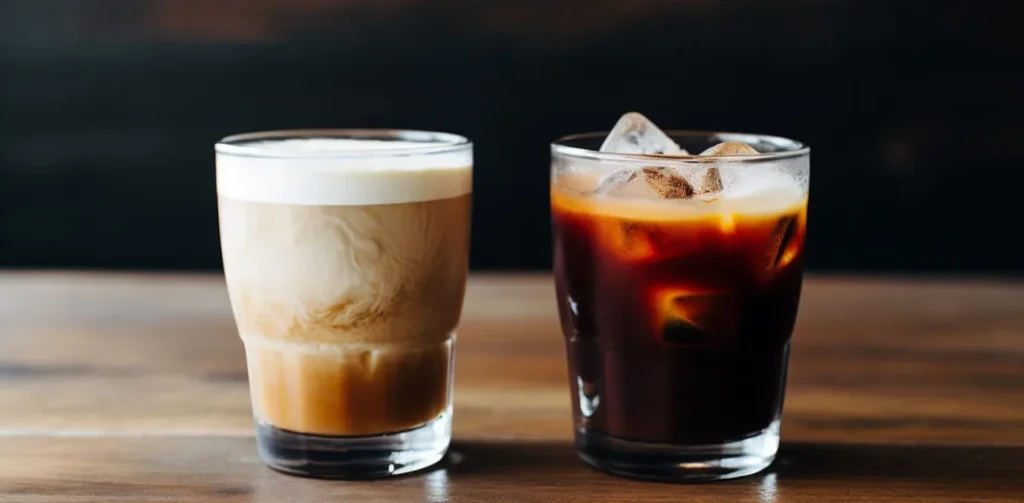
Difference between Cold Brew and Traditional Espresso
Cold brew espresso and traditional espresso differ in several ways, from the brewing methods and equipment used to the resulting flavors and sensory experience.
Brewing methods and equipment
Cold brew espresso is prepared differently from traditional espresso by using different equipment and methods. It’s made by soaking coffee grounds in chilled or room-temperature water for an extended period, rather than passing hot water through an espresso machine. Soaking can take up to 20 hours.
To make cold brew, specialty brewers can be used which are designed to steep coffee grounds slowly over several hours using always cool water. No pressure is necessary for this process as the taste profiles change significantly between hot and cold extraction methods.
Specific grinds and filter materials will also yield optimal flavor depending on the desired style of beverage. Making great cold brew also requires precise measurements to ensure consistency throughout batches. Something that may not always be achievable when steeping manually at home without any training or guidance.
Organoleptic properties and taste differences
Cold brew espresso and traditional hot espresso differ in flavor profile, texture, intensity, and caffeine content. These differences can be attributed to the brewing methods used for each type of coffee.
One key difference between cold brew and regular coffee is that cold brew is made with cold water, not hot. This results in a smoother taste with reduced acidity. The longer steep time in cold brew results in a more concentrated and aromatic coffee compared to regular brewed coffee.
On the other hand, traditional espresso requires high heat and pressure to extract robust flavors from fresh ground coffee beans. It produces shots that are usually served solo or as part of an Americano-style drink.
This method extracts small amounts of essence from the beans multiple times. This creates intense flavor profiles with sweet floral or herbal notes, and hints of chocolate or nuts, depending on the bean’s origin. With finely ground beans and proper tamping, the coffee will have a creamy top layer, known as crema.
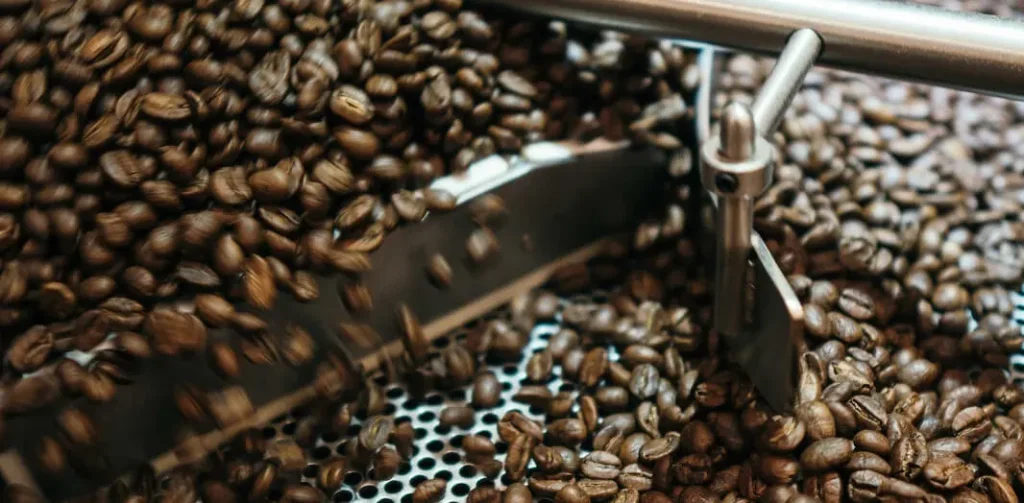
Chilled vs. hot extraction
When creating cold-brew espresso, a chilled extraction method is utilized by steeping coffee beans in cold water for a prolonged period, typically 12 to 24 hours. In contrast, traditional espresso is brewed using a hot extraction method, which entails rapidly adding hot water to freshly ground coffee and producing a shot of espresso within 30 seconds.
As such, each method has its unique set of benefits that affect the flavor profiles and characteristics of the final product. Cold brews typically have lower acidity and bolder notes, while traditional espressos generally feature more intense flavors with less bitterness than other types of coffees.
Moreover, both processes require significantly different equipment—traditional espresso machines vs. slower/manual immersion brewers—and preparation techniques, including heat or no heat, depending on the type chosen above.
How to Make Cold Brew Espresso
You will need a coarser grind of coffee beans, cold water, and an immersion method such as a French press or a cold-drip brewer.
Ingredients and equipment needed
Making cold brew espresso is surprisingly easy at home and requires a few basic ingredients and equipment. All you need are the two key ingredients—espresso beans and water. The general rule of thumb is a 1:1 ratio of coffee to water, but you can adjust your recipe depending on how strong or mild you like it.
You don’t need any fancy tools, either! Cold-brew espresso can be made using everyday kitchen tools, such as a French-pressed coffee maker or another manual brewing device, and a simple straining method like a cheesecloth or paper filter.
With just some planning, it’s possible to make cold brew without a machine by combining grounds and chilled water in large mason jars overnight.
Steeping process and brew times
Making a delicious cup requires precision, attention to detail, and the right equipment. The steeping process is one of the most crucial steps when it comes to brewing cold brew espresso.
During this process, ground coffee beans are left in contact with cold water for an extended period of time – usually between 12-24 hours – allowing them to extract their flavor compounds into the liquid.
This creates a strong concentrate, the base ingredient for all espresso drinks like iced lattes or ice cream floats.
Straining and filtering methods
When making cold brew espresso, effective filtering and straining techniques are essential. This helps remove particles from the liquid and keep sediment from the brewed beverage.
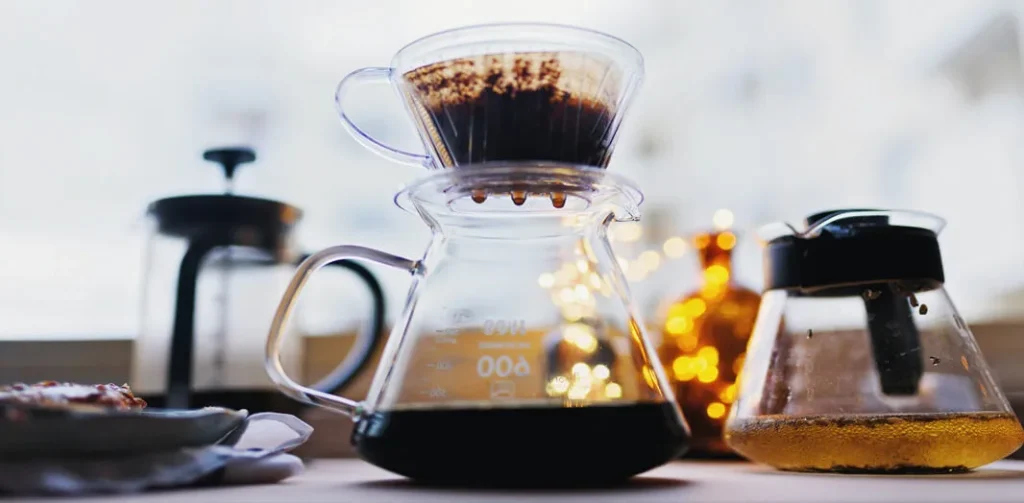
A coffee filter can be used for slow straining, or cheesecloth can be draped over a pitcher for efficient filtration. The French press method is also popular for cold brew, as it allows flavorful oils to mix in while removing suspended solids.
These are just some methods that help produce a smooth and clean cup of cold brew espresso every time!
Dilution and serving suggestions
Cold brew espresso is a delightful coffee experience that requires the right water to coffee ratio. Different liquids can be used to dilute cold brew, depending on your personal preference.
I recommend adding milk or milk alternatives if you prefer a creamy and less acidic espresso. Using water to dilute your espresso may be the way to go for a bolder taste. It is important to stir your drink after adding your liquid of choice to achieve an even blend. You can adjust the level of dilution to suit your taste preference and create a personalized coffee experience every time.
Factors Affecting the Taste of Cold Brew Espresso
The taste of cold brew espresso is influenced by several factors, such as the type of coffee beans, grind size and uniformity, water quality and temperature, steeping time, and ratio.
Type of coffee beans used
The type of coffee beans used for cold brew espresso matters. Different types of beans have different organoleptic properties, and the roast can make a dramatic difference in flavor.
For instance, light roasts tend to be bright and acidic with pronounced fruit notes, while dark roasts are heavier-bodied and have deep flavor characteristics.
It’s important to consider the coffee variety you use, as different origins produce distinct flavor profiles that can be sweet, spicy, or chocolaty, depending on where the coffee is grown.
In addition, freshness and quality are critical—stale or poorly roasted beans will drastically change any final product’s taste profile! Selecting the right high-quality beans from your favorite origin and/or reserved lot blends is essential for making an excellent cold brew espresso beverage.

Grind size and uniformity
For cold-brew espresso, grind size and uniformity are key to achieving the best flavor extraction. Different brewing methods need specific grind sizes for optimal results—grinds that are too coarse or too fine can negatively impact taste and strength.
The surface area of coffee granules is affected by the particle size of your coffee grounds, so controlling your ground’s size distribution can vastly improve the taste of your beverage.
It is essential to consider that using frozen beans when grinding will produce a more uniform particle size, making the grinding process easier as the beans will not stick together.
Burr coffee grinders are an excellent tool to achieve an even grind size distribution. Regardless of your preferred method, these factors will greatly affect the quality and taste of your cold brew espresso.
Water quality and temperature
Water temperature is crucial in cold brew espresso, as it affects the extraction of flavors and aromas. Too cool leads to flat coffee, while too hot loses subtle nuances.
Temperature stability is also important to ensure optimal flavor quality. Current machines can reach temperatures within one degree Celsius of accuracy from shot to shot.
The ideal brew temperature for espresso is around 92°C, with stable conditions for varying extraction times—longer for darker roasts and shorter for lighter ones.
Steeping time and ratio
Steeping time and ratio play critical roles in the brewing process of cold-brew espresso. Adjusting these factors can drastically affect the flavor profile of the final product, from never-bitter mild coffee to powerful, punchy cups.
By adjusting the length of steeping—which usually ranges between 12 and 24 hours—and using different coffee-to-water ratios, personal tastes can be catered for. For instance, shorter steeping times may result in mellower cups, while longer ones yield bolder alternatives—depending on how much and which type of beans are used.
With practice, you’ll soon find out which combination is best suited to your particular palette, creating unique concoctions that are tailored perfectly to your own specifications!
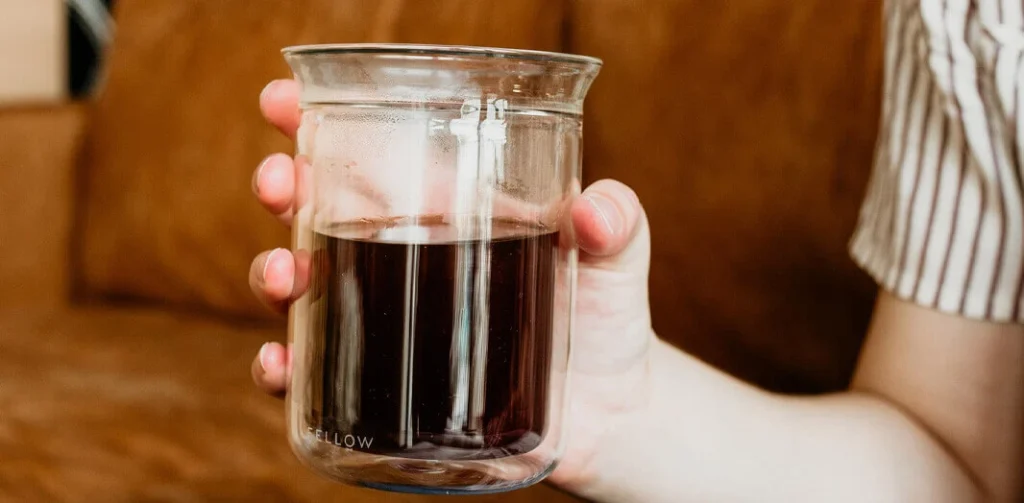
Is Cold Brew Espresso the Same as Regular Espresso?
Discover the answers to this age-old question by comparing brewing methods, flavor profiles, and strength.
Definition and characteristics of espresso
Espresso is a form of coffee that is bold, rich, and full-bodied in flavor. It is made by forcing hot water through finely-ground coffee beans under pressure. This method unlocks intense flavors and aromas from the fine grounds, resulting in a strong and concentrated espresso shot with high levels of caffeine.
Due to its intensity, espresso typically comes out as a single or “short” serving size, just one to two ounces. Even if you don’t take sugar or cream, it packs quite the punch! Espresso is also an excellent base for many beloved popular espresso drinks, such as cappuccinos, lattes, macchiatos, and more.
Comparison of brewing methods and results
Cold-brew espresso and traditional espresso have vastly different brewing methods and results. Here’s a comparison table to illustrate the differences better.
| Cold Brew Espresso | Traditional Espresso | |
| Equipment Used | Large jar or cold brew maker, filter | Espresso machine |
| Brewing Method | Cold water steeping for 12-24 hours | Hot water forced through finely ground coffee under pressure |
| Extraction Temperature | Cold or room temperature | Hot (between 190 and 205 degrees Fahrenheit) |
| Organoleptic Properties | Smoother, sweeter, less acidic, and less bitter | Strong, rich, and potentially more bitter |
| Taste Differences | Due to its longer steeping time, cold brew espresso has a stronger flavor and is less acidic compared to traditional espresso. | Traditional espresso has a more intense, concentrated flavor. It may also have a higher level of acidity. |
| Caffeine Content | Higher due to longer steeping time and higher coffee-to-water ratio | Lower because of the short, rapid extraction process |
| Amount of Coffee Used | Typically uses double or triple the amount of coffee beans | Uses less coffee beans |
To summarize, cold brew and traditional espresso differ in their brewing methods, taste, and caffeine content. While both have unique perks, your preference might depend on your taste and how you like your coffee.
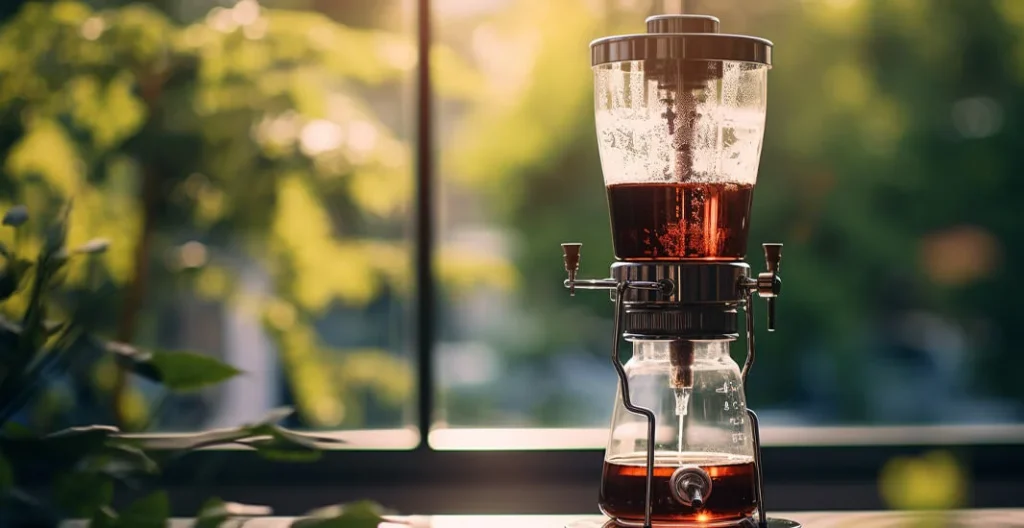
Flavor profile differences
Cold brew espresso offers a unique flavor profile compared to regular espresso, thanks to its distinctive brewing process. Unlike traditional espresso brewed quickly with hot water, cold brew espresso steeps slowly with chilled or room temperature filtered water.
This prolonged extraction process yields a smoother taste, enhancing the delicate fruity notes of lighter roast beans. It also minimizes the bitterness and acidity often found in hot-brewed espresso. Darker roasted beans used in cold brew bring out deeper cocoa & earthy undertones, adding a unique dimension that hot brewing methods can’t achieve.
The flavor difference between cold brew and hot-brewed coffee is even more pronounced when mixed with milk and sugar, offering a unique and enjoyable experience. Cold brew extracts distinct flavors and has lower acidity, making it a sweeter and more palatable choice for coffee lovers.
Storing and Enjoying Cold Brew Espresso
For the best quality, cold brew espresso should be stored in an airtight container in a cool, dark place. Whether enjoyed on its own or used in other drinks, savoring this smooth and unique beverage can elevate your coffee connoisseur experience!
Proper storage methods and shelf life
Proper storage is essential for cold-brew espresso to ensure its freshness and longevity. Cold-brew coffee should be refrigerated immediately after brewing and kept in the refrigerator for up to two weeks.
Using proper chilling techniques from the start can significantly extend the shelf life of homemade cold-brew coffee concentrate compared to regular brewed coffee. When stored correctly, it can last up to 14 days in the refrigerator, regardless of brewing time.
Be aware that mold may begin to grow if your cold-brew espresso is not used within a few weeks. Please use it promptly to ensure the best quality of your cold-brew. Store it away from any light sources, such as direct sunlight or fluorescent lights, to maintain its freshness for longer. These light sources can cause the flavor compounds to break down over time, leading to a stale taste in your drink.
Creative ways to enjoy cold brew espresso
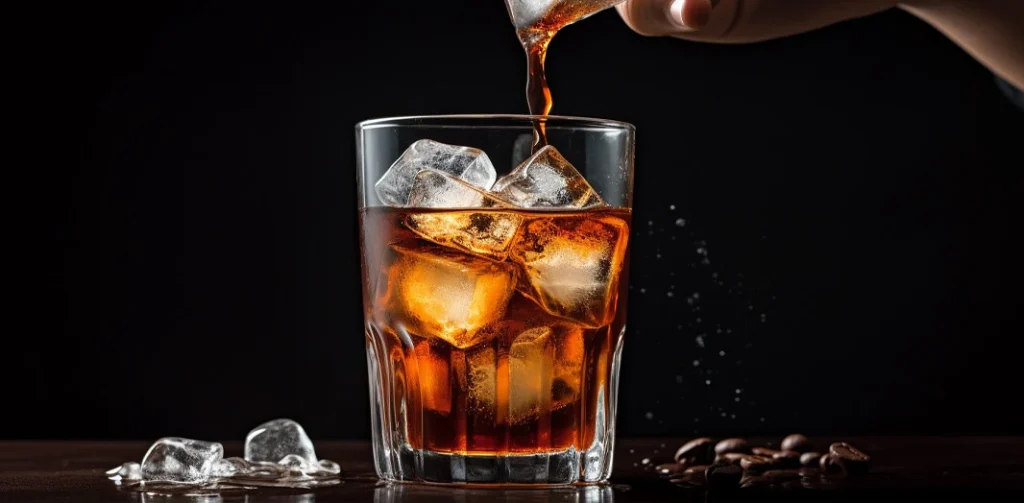
As the days get hotter, so do our summer drinks! For a refreshing twist on traditional iced coffee, try cold brew espresso. Its bold flavor and complex aroma make it a great way to beat the heat and stay energized during the long summer days.
Here are five creative ways to enjoy cold brew espresso:
- Cold Brew Iced Lattes – A classic blend of cold brew espresso, steamed milk, and frothy foam makes for an irresistible iced latte like you’ve never had before! Add your favorite flavored syrup or spice blend for an extra flavor.
- Espresso Frosé —Give traditional frosé an extra kick with a shot of cold-brew espresso! This unique twist is sure to please at any gathering. All you need is some red wine, a splash of juice or simple syrup, and cold-brew espresso. Combine all ingredients in a blender and enjoy this delightful drink!
- Mocha Smoothie Bowl—Who says smoothies have to be strictly breakfast food? Make yours even more special with some tasty mocha flavors! Mix banana, almond butter, cocoa powder, and cold-brew espresso until thick and creamy. To serve, top with granola or your favorite nuts/seeds/berries for added nutrition.
- Espresso Popgun-Style Mochaccino—This unique take on Vietnamese coffee combines classic mocha flavors with the coolness of ice cream. Fill each popsicle mold halfway with cooled cold brew espresso, then add two scoops of your favorite ice cream, followed by more chilled coffee mixture. Freeze overnight to enjoy them anytime for the perfect summer pick-me-up treat!
- Cold Brew Sourdough French Toast – Use homemade sourdough bread instead of traditional white bread for an extra depth of flavor. Then prepare according to usual recipe instructions. Except replace regular coffee with strong cold brew espresso instead in the custard mixture before dipping each slice into it before cooking it up in a skillet thing on medium heat until each side turns golden brown perfection — yummy!
Cold brew espresso-based recipes
Cold brew espresso is a delicious and versatile ingredient that can make some truly amazing dishes! Here are just a few of the recipes you can create with this delectable coffee:
- Iced Lattes – An icy and refreshing treat for hot summer days. Blend cold brew espresso, milk, sugar (or other sweeteners), and ice cubes until creamy and frothy.
- Coffee Cocktails — Add extra caffeine to your next happy hour with a cold-brew espresso martini or mojito. Both cocktails begin with a cold-brew iced coffee base but develop unique flavors when combined with liqueurs. Liqueurs like Kahlua or vodka, citrus juices, mint leaves, or flavored syrups like caramel or vanilla bean.
- Cold Brew Float — Assemble this treat by filling a glass halfway with cold-brewed espresso ice cubes, then topping it off with equal parts cream soda & chilled cream. Crafted simplicity at its finest!
- Affogato — Topping scoops of your favorite indulgent ice cream with diluted shots of cold-brewed espresso. This makes for an extraordinary dessert experience sure to satisfy even the most challenging sweet tooth cravings. For an irresistible twist, try using almond milk instead of dairy for a vegan-friendly option!
- Chilled Coffee Cubes — Freezing pre-brewed espresso shots into cubes creates convenient pieces that are perfect for any recipe requiring more than ground coffee. Such as confections, cake batters, or smoothies!
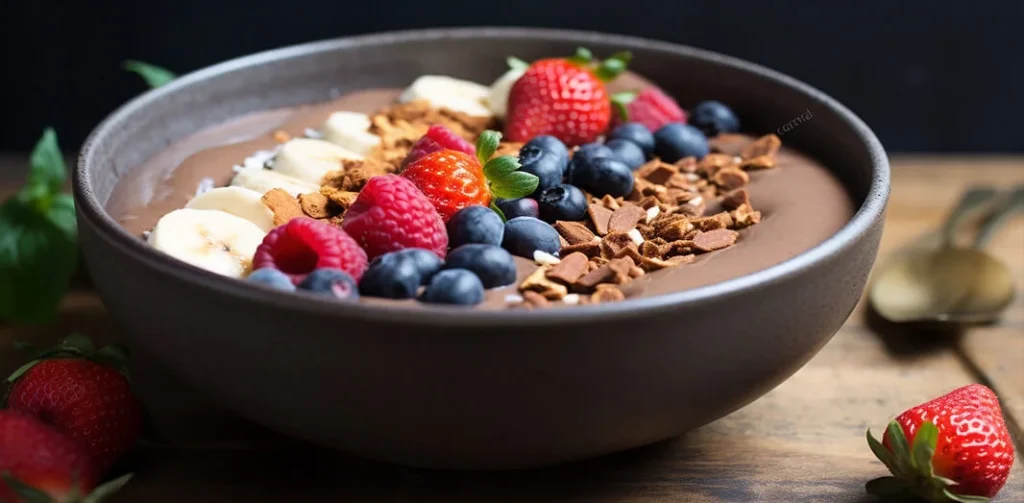
That’s A Wrap
Cold brew espresso stands out as a rich and versatile coffee variant for its intense flavor adaptability in crafting various. Unlike traditional methods, cold brew espresso uses a prolonged steeping process with cold or room temperature water. This results in a smooth, low-acid, high-caffeine drink that delivers a robust flavor without the bitterness.
Cold brew espresso has surged in popularity, especially among those seeking a potent morning boost or dinner treat. Whether it’s an iced latte, or a frothy cold brew, this brewing technique offers a world of possibilities. Give it a try today and experience a delightful coffee journey like never before.
